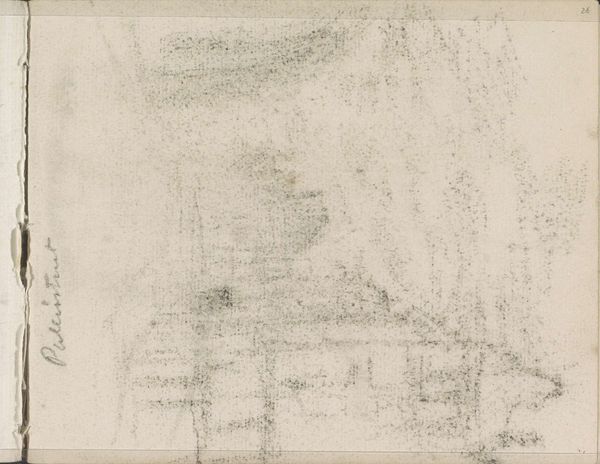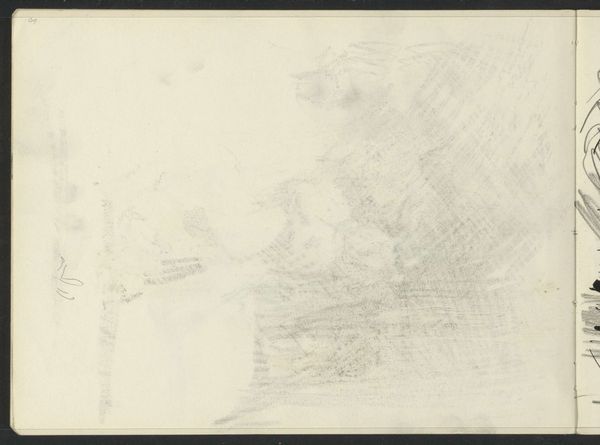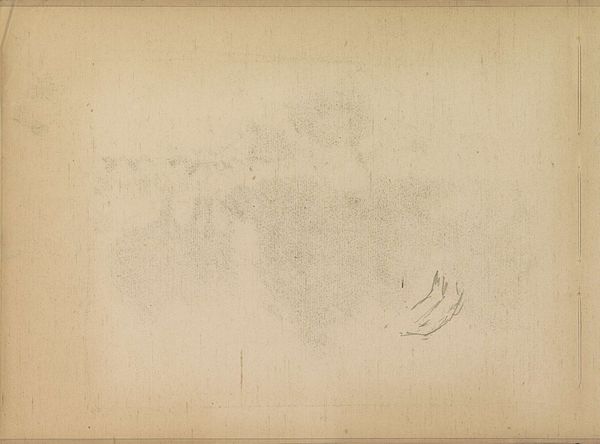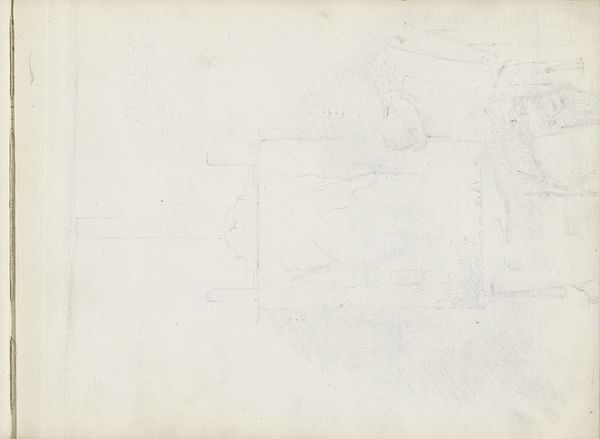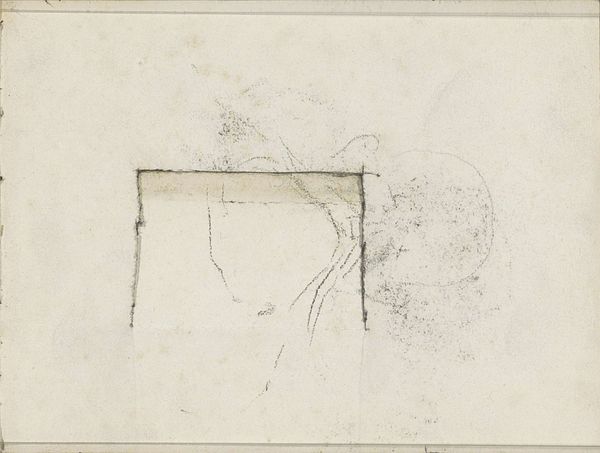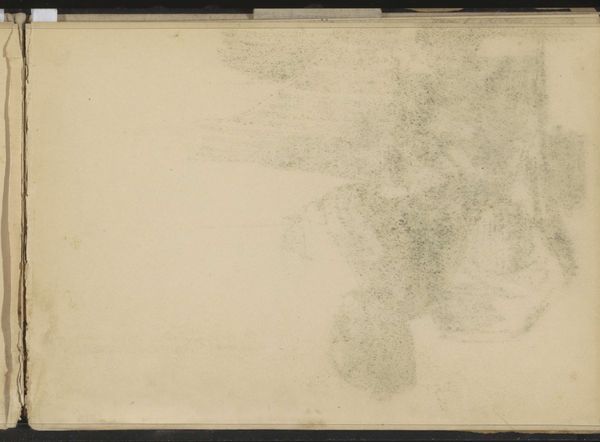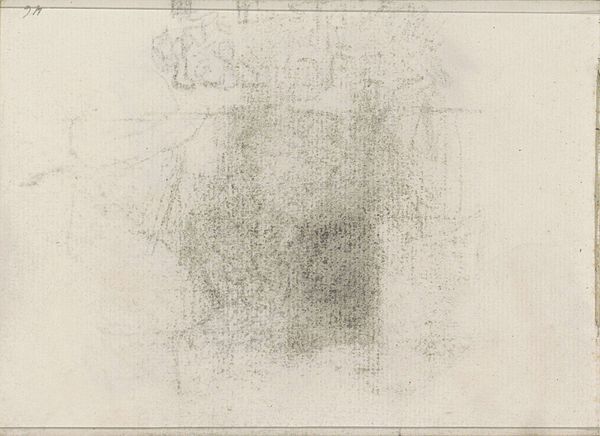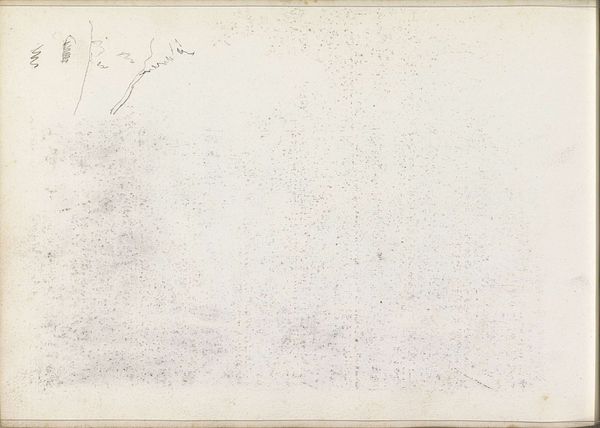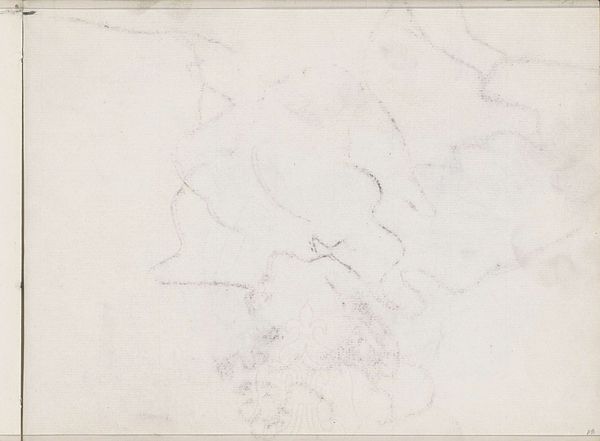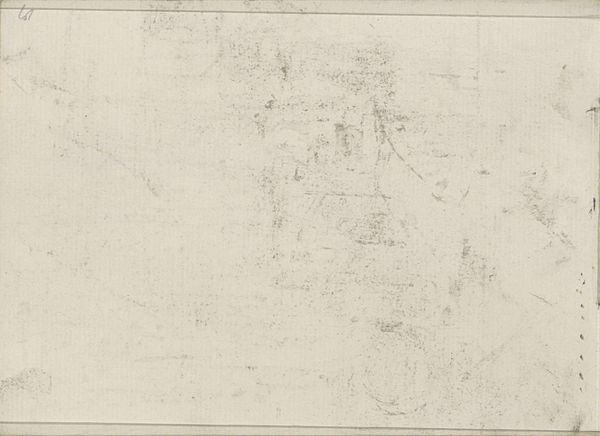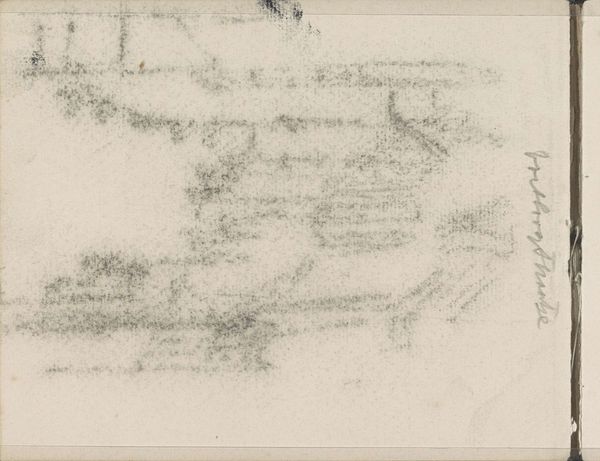
#
amateur sketch
#
aged paper
#
toned paper
#
light pencil work
#
pencil sketch
#
incomplete sketchy
#
personal sketchbook
#
sketchbook drawing
#
sketchbook art
#
watercolor
Copyright: Rijks Museum: Open Domain
Curator: Let's take a look at "Studies," a piece dating back to 1896 by Carel Adolph Lion Cachet, currently held here at the Rijksmuseum. What's your initial response? Editor: I'm struck by the apparent fragility. The faded paper and the faint pencil lines give it a delicate, almost ephemeral quality. It feels like glimpsing someone's private thoughts. Curator: Absolutely. I see it as a reflection of the artist’s internal exploration. Consider Cachet's position within the late 19th century, a time of shifting social structures and nascent modernist thought. His use of a sketchbook suggests a turning away from the established Salon system toward more individual, perhaps even subversive modes of artistic creation. Editor: And the very material tells a story, doesn't it? Aged paper, light pencil work—these speak to the artist's direct, unmediated interaction with the world around him. No expensive canvas or oils here. It seems focused on economy and access, which says something about the democratization of art production at the time. Was he perhaps influenced by the Arts and Crafts movement? Curator: Certainly possible. Though known primarily as a designer, Cachet clearly engaged in direct observation. We should think about class, too. Who had the leisure time and resources for artistic pursuits, even with readily available materials? This impacts who could even express themselves at all through visual mediums, it remains a crucial point of critique. Editor: I agree. There’s a quiet beauty in its imperfection. The incomplete, sketchy quality makes me think about the artistic process itself. The work shows the stages, and allows a glimpse into artistic labour. Curator: Indeed, and viewed through the lens of post-colonial theory, we can see Cachet's work contributing to the visual rhetoric that upheld particular power dynamics. He participated, like many artists of his era, in constructions of "otherness," impacting broader racial and social politics through his designs. Editor: So, thinking about materiality, we can see the intersection between personal artistic exploration and broader issues of artistic movements, and societal status. Curator: Precisely, placing the work within a socio-historical context makes it much more enriching and opens new areas of exploration for contemporary thought and analysis. Editor: From this examination, the simplicity that caught my attention turns into something multilayered; considering production as a foundation transforms our interpretation.
Comments
No comments
Be the first to comment and join the conversation on the ultimate creative platform.
